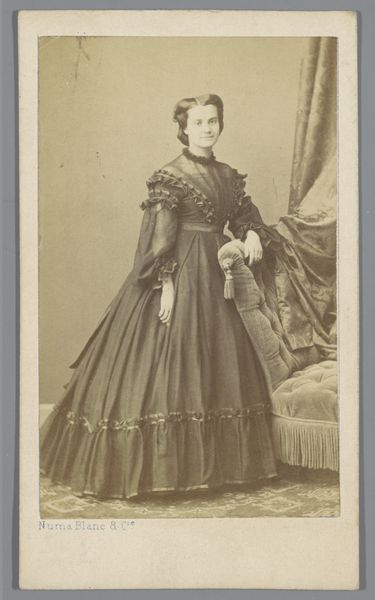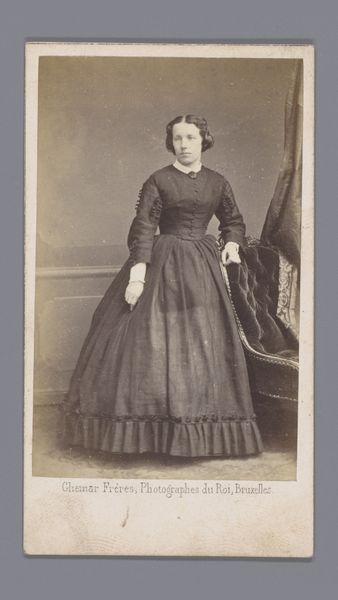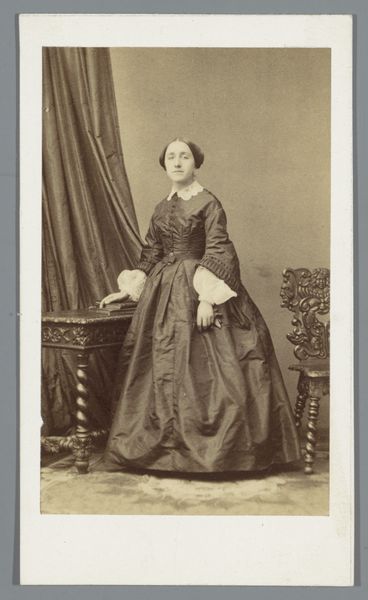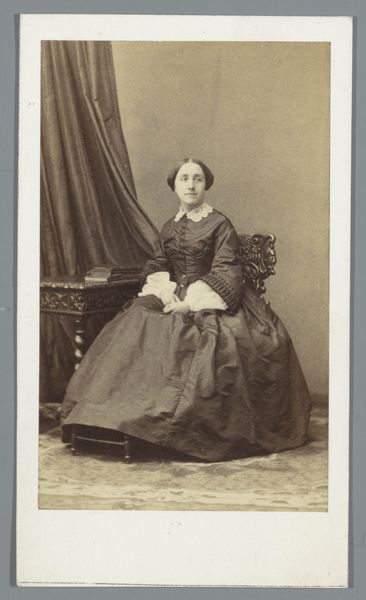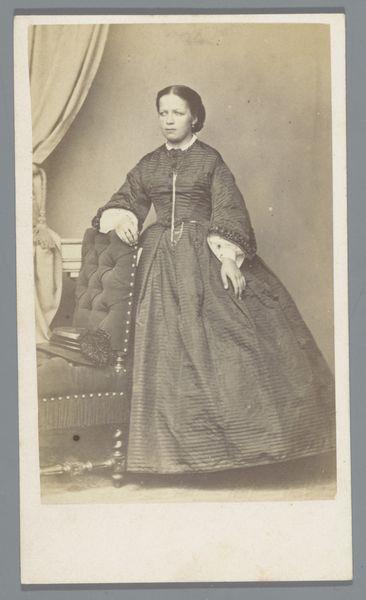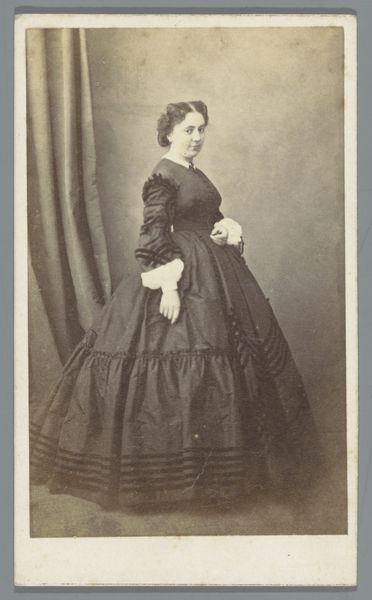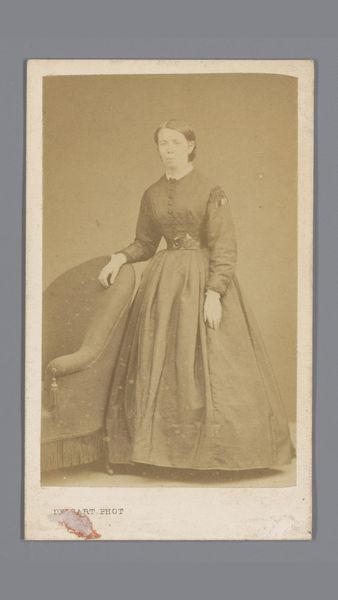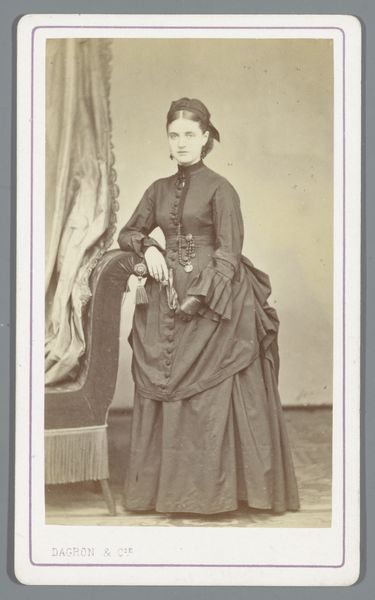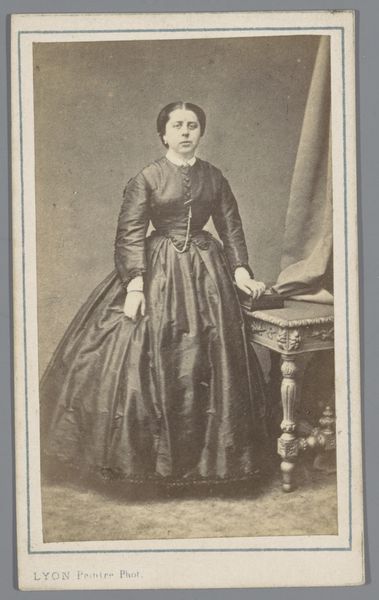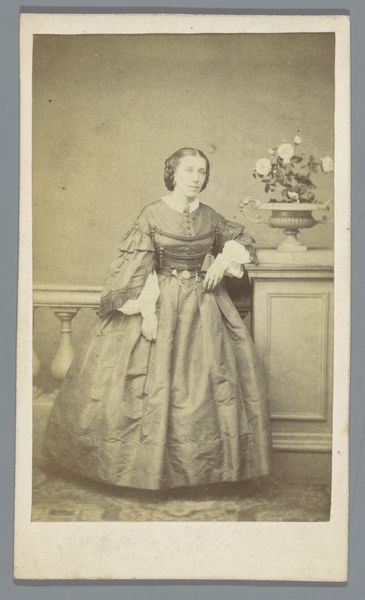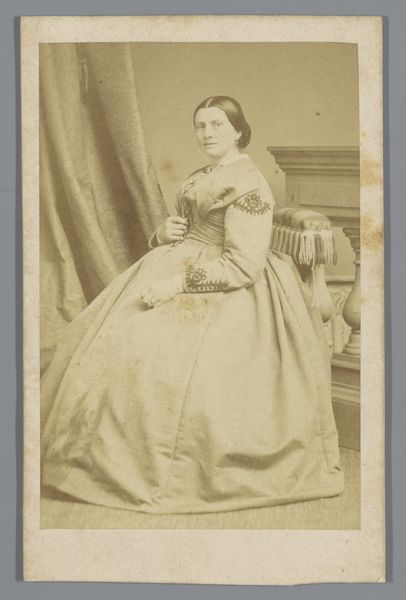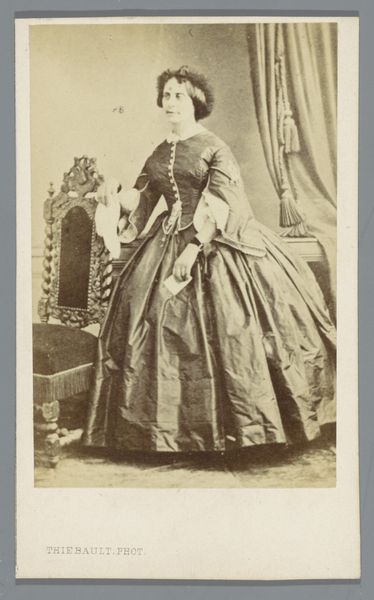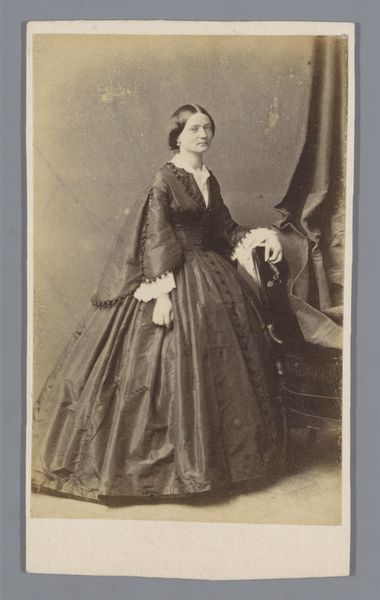
photography, albumen-print
#
portrait
#
muted colour palette
#
photo restoration
#
photography
#
framed image
#
albumen-print
#
realism
Dimensions: height 103 mm, width 62 mm
Copyright: Rijks Museum: Open Domain
Curator: This is a portrait from the Rijksmuseum’s collection, an albumen print realized between 1860 and 1873 by Marie-Alexandre Alophe. It is titled "Portret van een onbekende vrouw," or "Portrait of an Unknown Woman". Editor: It strikes me as austere. Her gaze is direct, but there’s also a sort of resignation, or maybe acceptance, in her expression. The muted tones enhance that sense of solemnity. Curator: Right, the albumen print process, popular then, yields these wonderfully subtle gradations, and they're loaded here. This image really speaks to the rise of photography as a tool for both documentation and idealization of women within a rigid social structure of the period. How was womanhood framed, literally, within the portrait format? How did dress codes reinforce social barriers? Editor: I am also drawn to the column fragment visible to her left. It echoes classical portraiture, symbolizing, I believe, strength and resilience. The architectural element and her reserved pose remind viewers of iconic images of historical importance and are connected to social standing. It elevates her. Curator: But who was she, and what agency did she possess in its construction? What were the social constraints within which this portrait was produced? I feel a powerful tension between the knowns of this portrait style, its fashions and conventions, and the unknowns of this individual's lived experience, that is still felt. Editor: You're right, she remains nameless, essentially, a woman representing the archetype of her era. Yet, looking closely, the small, perhaps unconsciously expressed resistance in her eyes... It complicates my initial sense of resignation. Curator: Yes, those potential "readings" are critical. Thinking about contemporary feminism helps us explore nuances of power and visibility that might otherwise be overlooked, right? Who gets to see, who is seen and how? Editor: Precisely, this photograph encapsulates both permanence and impermanence; the physical survival of an image of somebody against the elusiveness of ever truly knowing her, outside the language of symbolic representation. It is melancholic, but also contains great beauty. Curator: For me, thinking through the politics of representation illuminates so much that remains unsaid. A portrait invites an intimate engagement while holding subjects in the past, at a cultural and historical distance. Editor: It truly allows one to explore how symbols of history may be reflected through different gazes, eras, and contexts. Curator: A potent combination, definitely worth pausing to reflect upon.
Comments
No comments
Be the first to comment and join the conversation on the ultimate creative platform.
